Where 2.0 is going to be epic this year (see my interview with Brady Forrest here), and it is so exciting to be part of it. Location technologies and augmented reality are annointed rulers now. Time Magazine recognized augmented reality as one of its 10 Tech Trends for 2010 (for more see ReadWriteWeb).
The photo above is by Jeremy and Lisa Hight. Jeremy Hight is an information designer, theorist and artist working in Augmented Reality and Locative Media.  His essay “Narrative Archaeology†was named one of the 4 primary texts in Locative Media.
Jeremy Hight will be part of our panel: The Next Wave of AR: Exploring Social Augmented Experiences, with Anselm Hook, Joe Lamantia, Sophia Parafina and myself. We will debut the video of the ARWave project demo that brings together augmented reality, geolocation, and wave federation (more details later in this post). And, Jeremy will bring to our presentation some augmentations on his recent brilliant work and paper, “Writing Within the Map.â€
Greg J. Smith’s points out in his in depth look at Jeremy’s work that it, “dovetails with some of the main points in Bruce Sterling’s recent atemporality keynote at Transmediale†– fortunately there is a transcription of Bruce’s keynote here. What is so awesome about this dovetailing is that you can get a feel for the fun part of living in an, “atemporal network culture.â€Â And, if you want to really understand just how much locative media and augmented reality have changed us, you might want to dig into these texts.
Bruce Sterling and Jeremy Hight, and members of the ARWave team, and a superb cast of augmented reality movers and shakers – including Will Wright and Jesse Schell, will be speaking at Augmented Reality Event in Santa Clara, June 2nd and 3rd.
But, this week, the AR community’s attention will be on the events at Where 2.0.  The keynote speakers will be streamed live, so if you are not fortunate enough to be there, tune in!
The Next Wave of AR: Exploring Social Augmented Experiences
On our panel, Jeremy Hight, Anselm Hook, Sophia Parafina, Joe Lamantia and I will cover some of the key social, cultural, technical and interactional questions for exploring social augmented experiences. There will be five lightning presentations, and an opportunity for questions from the audience, and a world premier of the ARWave demo!
1) “Augmenting the map as interface: AR and Locative Narratives†- Jeremy Hight
*Map augmentation of the historic route 66 can house an essay contest and publication globally but as embedded within that map augmentation instead of books or even web sites.
* A place on a map can be a graphic index and database to save and collect
the writing of that place with a graphic or textual search index.
*One can pop immersive visualizations of abandoned or lost buildings from map location in shared software and collectively augment (imagine channels within the lost core of detroit where one is memories and accounts tagged within parts in the immersive visualization while another is of poems and stories written by people moved by the place and its semiotics and story).
*The news stand is to be the map.
*New forms of literature will be born of mapping, spaces,augmentation and
new tools
The concept drawings below (click to enlarge)Â are a collaboration between Jeremy Hight and Paul Wehby, Senior Designer at LA County Museum of Art.
2) Anselm Hook will look at, “10 reasons why AR isn’t a flash in the pan,” and how, “AR can help us see the world we would like to have exist.â€
Anselm notes, “So much of what we do is so fickle and I’m looking for ways to connect digital media work to deep values.â€
3) Sophia Parafina will present on, “Social AR and Crisis Responseâ€
“Augmented reality as a multi-party conversation.  Rather than being passive viewers of AR with a limited ability to  checkin to places and make annotations, current devices can broadcast sensor information that can be fused into an interactive stream. AR users can send and receive information, location, and sensor data from their mobile device. The streams can be federated into a unique AR view composed by the user.
Entertainment and gaming are obvious applications, but it can also be applied to crisis situations such as the search and rescue operations in Haiti.  Efforts such as Mission 4636, the SMS translation service, could benefit from AR views.  The collaboration among the Mission 4636 volunteers was the key element  in their success for providing location and rapid translation to responders on the ground.
With an AR view, responders can send back their sensor information from their mobiles to provide contextual information to remote volunteers.  This extends the conversation between remote volunteers and on the ground responders and fosters collaboration which was a key element for the success of Mission 4636″
4) Joe Lamantia, an experience design and strategy consultant helping to define the interaction framework and scenarios behind ARWave, will discuss, “Design Principles For Social Augmented Experiences:â€
“With the exotic mixed realities envisioned by futurists and science fiction writers seemingly around the corner, it is time to move beyond questions of technical feasibility to consider the value and impact of turning reality inside out for everyday social settings and experiences. Thanks to the inherently social nature of augmented reality, we can be sure the value and impact of many augmented experiences depends in large part on how effectively they integrate with the social dimensions of real-world settings, in real time.”
Joe will share, “eight guiding principles for designing experiences that engage naturally with the social dimension, and increase the value of augmented experiences.”
5) “ARWave – A demo and state of play,” from Tish Shute
I will have the awesome privilege, on our Where 2.0 panel, of showcasing ARWave.  We will premier the ARWave demo which shows how ARWave has accomplished the basics of geolocating data on Wave Federation Protocol (and real time collaboration on this geolocated data). If you’re interested in the ARWave project join the Mailing list, FAQ are here, and have a peek at the current state of development at Google Code, and the specification for an AR Blip. We also have Waves for the project hosted on Google Wave. You can join the general discussion here, and the technical side here.
The picture below is a screen shot from the demo video produced by core AR Wave developer and concept designer, Thomas Wrobel.
Click on the image to enlarge, and note: “The pink thing is from Dennou Coil. Its an anti-virus program (that literally chase’s down bugs and glitches and removes them).â€
ARWave
In ARWave, stories or art are tied to place. And as Jeremy Hight writes:
“The possibility exists to take a part of an area and overlay a dystopia, a utopia, multiples of each of these, or even recreations of previous incarnations in the past. Writing and publication thus cannot only be of place, and form(s), but of selected augmentations of icons, streets, buildings and related texts on top of the map. These spaces can be built in real time and can be turned on and off as channels of augmentation that over time illustrate many faces of place in its present, past, possible futures,etc. with texts within these alternate spaces as commentary, as fused aesthetic analysis, or simply creative writing relevant to these charged and hybrid spaces.â€
As Thomas notes, Jeremy Hight’s, “idea of channels ties into the concept of waves = a layer, and people can have many layers on at once.â€
This is different from the Layar concept of a layer or rather “layar.â€
“We are not talking about layers in the classical map layer way of thinking, where you have a layer of all restaurants or a layer of all mountain peaks, etc.,” notes ARWave developer Markus Strickler.
Currently all geo location apps like Layar have to use their own servers, so users have to use different clients with different log ins to see data from different sources. But because ARWave uses federation, we don’t depend on centralized infrastructure where the client of one company can only connect to the server of that company. This opens up many exciting new possibilities for how people can decide to view and publish geolocated data.
With AR Wave, via one login, people can access the whole distributed network of servers (see diagrams below), and any content will be accessible to them. ARWave will make it easy for individuals, not just developers, to layer their environment – allowing the creation of augmented reality content to be as simple as contributing to a Wave.
“ARWave will enable individuals to publish easily to everyone….or just a few people,†Thomas notes:
“To ‘publish’ is also self publication and distribution in communities or like minded groups without the hard read of publication or rejection.†= publishing on a Wave. No one approves it, anyone can publish to communities, or their friends and family. Or even just personal publishing it for their own reference.â€
But ARWave does not compete with existing AR Browsers.  On the contrary, AR browsers like Layar, Wikitude and others, could implement ARWave and use it to enhance their applications.
“Layar has a killer browser already, ARWave would add social features. They can keep their “walled garden†of data and still join the federation of open data too ![]() †(Thomas Wrobel)
†(Thomas Wrobel)
Yup, that is the cool part of federation – you can have your cake and eat it too!
Sophia Parafina and I will be organizing a discussion session on ARWave and Federation at WhereCamp, right after Where 2.0, April 3rd and 4th, and Dan Peterson who is in leading the federation effort for Google Wave will join us.
The diagrams below illustrate how ARWave and federation can revolutionize the way we share our augmented realities.
Real Time Social Augmented Experiences
Another key aspect of ARWave is it’s near to real time update capabilities. As Jeff Pulver pointed out in, “SXSW 2010: The days twitter became less relevant:â€
“At South By Southwest 2010 (SXSW), a strange thing happened on the way to Austin. A community of twitter faithful shifted from sharing everything about everything on only twitter (and maybe Facebook) and changed their habits to rely on learning about what was happening and where things were happening by using foursquare and Gowalla instead. I’m sure there were other products and platforms being used including Loopt and GySPii but foursquare and Gowalla were the dominant platforms.â€
Later Jeff wrote:
“There were times where I could feel the ebbs and the flows of the people move as different people checked into various locations. While most of this was felt locally in the place I was in, it also became apparent on the platforms when hundreds of people would rush to check in to a location. There were also times when it felt like I was chasing ghosts; These were the times I would go to a spot because a friend had checked into that spot only to discover they were no longer there.â€
ARWave’s realtime collaborative capabilities are going to introduce some fascinating dynamics to “chasing ghosts,†as the ARWave framework gets integrated into services like foursquare – a project we have already begun to look at.
Augmented Reality Search
As I mention in my previous post, ARWave presents some fascinating possibilities for AR Search. For example, one might do advanced searching within waves using SPARQL, which could then display in the form of a personal blip in your viewpoint (which in turn could be shared with others). Linked data will be massively important in filtering and delivering useful info for augmented views (see my conversation with Will Wright about the problem of augmented reality overriding our very smart instincts and not being useless or worse as a result).
Anselm Hook, who I interviewed in depth recently about, Visual Search, Augmented Reality and a Social Commons for the Physical World Platform: Interview with Anselm Hook, has some very interesting thoughts on real time stuff, trading brokerages, and the view within a single city block, which he elaborated on in the second half to this interview which is upcoming on Ugotrade soon!
The ARWave Developers
There are three people who unfortunately can’t join us at Where 2.0 –  the costs of travelling from Europe being an obstacle.  But as they have been developing the code for ARWave that will rock our augmented world, I asked them, in a Wave conversation, to give me a few comments about their interest in working on ARWave, and a pic and a short bio.  Also I should mention the work of the PyGoWave team whose incredibly fast work creating PyGoWave has given ARWave a rocket launch pad. Also many thanks to the Wave community, see the Wave Federation Protocol documentation, Google’s Wave Server, RubyOnSails (Ruby On Rails based Wave server).
Davide Carnovale @need2revolt
“Imho, the coolest geolocated related thing is that we’re making a world where the info does not necessarily comes from an explicit search from the user, but comes also from the actual locaton you’re in. For instance, you can have special offers in stores like fourquare does, or your friends can leave geolocated notes for you that are triggered when you walk by. We can have games based on the treasure hunt schema requiring you to actually go to specific location.
Other than this I can think about self-guided tours of the city, maybe user generated too, or for museums.
Naturally these are long term goals with some rl use cases.
As for my bio, there isn’t much to say… I got a first level degree in computer science and I’m taking the second (and last) level. I’ve developed with mobile agents, osgart/artoolkit, brain computer interfaces, linux kernel and that’s pretty much all…â€
“If you are looking for specific advantages of using Wave I’d say;
* Federated – Letting creators tap into bigger userbase. Each new app or data layer will add to the “incentive†for users to join in. Google had some good stats a few months back as to how much a simple login screen can put people off using stuff.  By breaking that barrier it should make AR userbase’s grow.
* It deals with user accounts, permissions, and real-time updating without creators needing to make a new server standard themselves. It lowers barriers to development.
* As the clients, servers, and data can be made separately by different parties, its easier for developers to concentrate on just providing what they want. You want to just make content? No problem! You dont need to worry about doing anything else but that. It would become as easy as making a webpage (or easier!).
* Bots will allow the development of interactive AR games very easily. Just like modern version of IRC bots, the infrastructure does the heavy lifting, and interesting things can be done with just simple scripting.
* The idea is anyone will be able to make a layer onto the world, and people can mix, match and share their layers as they wish. Its not just the data that becomes interesting to see augmenting our world, but the combinations of data! For example, perhaps you could see the profits generated by different companies above their buildings, but also see how environmentally friendly they are at the same time. Or maybe see pollution levels against health-statistics. Seeing combinations of geolocated data from different sources at the same time has many interesting possibilities both for scientific as well as casual (game/ map/ chat) use.
hmz..I could go on forever listing stuff here really…..
I guess if we are supposed to be forming a roadmap of significant/interesting things for ARWave?
* Example clients letting people make their own layers (waves) and add points to them.
* Letting people log in to different servers
* Servers federated together. (not our responsibility, but essential part of the roadmap).
* Anyone logged into any server can see data from anyone else that’s shared with them, regardless of where they are logged into
* 3D support, demonstrating various sorts of geolocated data.?
* Use of bots for example games?
—-
My Bio’s quite simple.
Studied 3D Animation in Portsmouth, UK.
Moved to the Netherlands, have since been working in creating ARG games, in the last year founded Lostagain (Lostagain.nl).â€
“I think the main point behind ARWave is to go beyond simply displaying existing placemarks on top of a live camera view, towards a highly personalized, augmented world where everybody can edit and share localized information collaboratively and in real time. Wave provides the means to do this through its model of persistent real time conversations and adds even more by providing a way for personal agents (robots) to participate in these conversations.
As for my Bio: I’ve been developing Web applications for the last 15 years, hold a degree in Image Sciences and am currently working as a Java developer in Cologne, Germany.â€

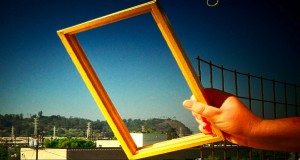
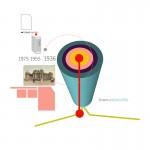
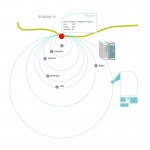
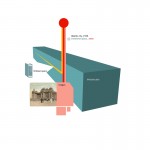
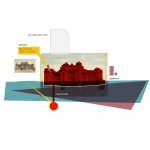
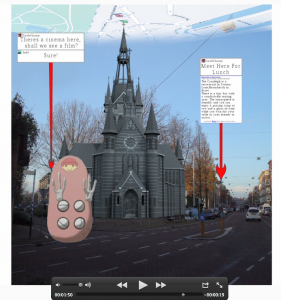
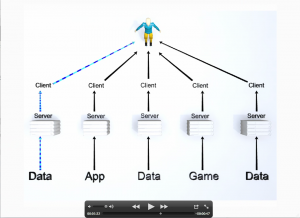
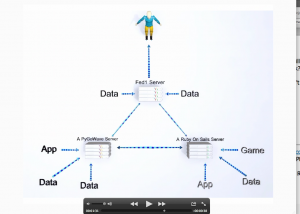



0 Comments For This Post
3 Trackbacks For This Post
April 4th, 2010 at 2:13 pm
[...] ARWave at O’Reilly’s Where 2.0 conference. [...]
April 6th, 2010 at 12:49 pm
[...] R̩akit̩ augment̩e et m̩dias sociaux Рugotrade [...]
April 28th, 2011 at 8:01 pm
[...] The Next Wave of AR: Exploring Social Augmented Experiences [...]